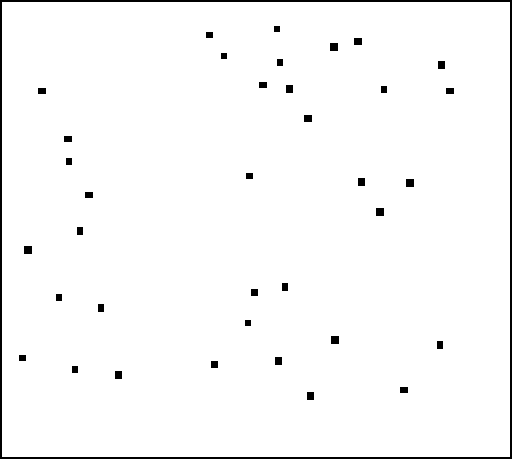Geoscience Reference
In-Depth Information
a uniform distribution for the
y
coordinate. When generated, the random
point (
x
,
y
) will fall somewhere within the study area's bounding box but not
necessarily inside the study area. If the random point (
x
,
y
) falls outside the
study area, it is discarded and another point generated. The process of gen-
erating points inside the bounding box is repeated until the desired sample
size in the study area is achieved. An example of a simple random sample
from a rectangular study area is shown in Figure 10.1.
Simple random samples provide an objective assessment of the study area.
If a particular sample site is inaccessible or unsuitable, additional sites are
easily generated and the sample will retain its basic statistical properties.
Simple random sampling is the only design listed in this section that does
not utilize
a priori
information on target variables and therefore can be easily
and rapidly implemented in most studies. Simple random sampling, how-
ever, suffers from the fact that it does not guarantee uniform coverage inside
the study area. It is possible for clumps of sample locations and large nons-
ampled areas to appear. For example, the sample shown in Figure 10.1 con-
tains a conspicuous vertical strip approximately one-third of the way from
left to right that is devoid of sample sites.
Assuming that spatial correlation exists in the study area, these clumps
and nonsampled areas leave some regions of the study area overrepresented
and other regions underrepresented. Over- or underrepresentation of par-
ticular areas is not a problem statistically but is inefficient. It should be noted
that if no spatial correlation exists, a simple random sample may as well be
FIGURE 10.1
Example of a simple random sample of size 36 from a square study area.

